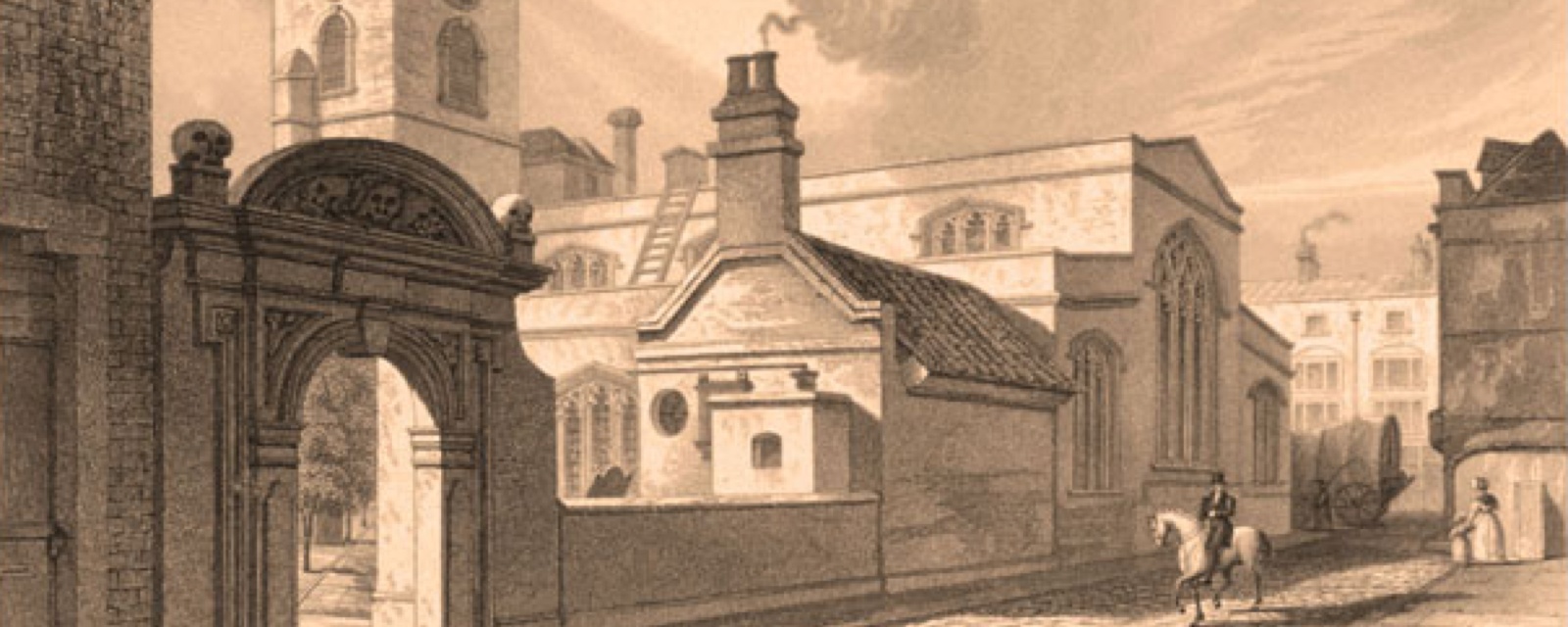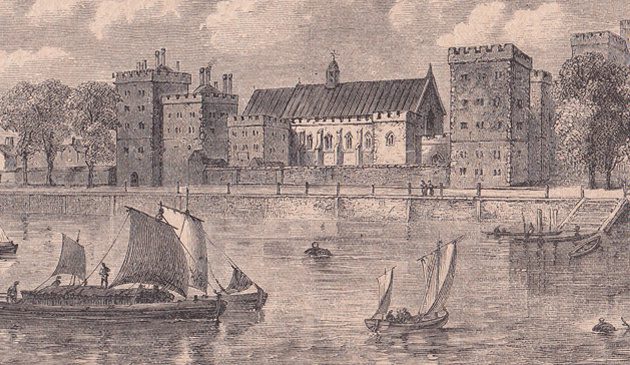St. Olave Hart Street

St. Olave Hart Street, seen from Seething Lane. Skulls and crossbones, noted by Charles Dickens, can be seen above the gate into the churchyard.
There are entrances into the church from both Hart Street and through the churchyard in Seething Lane. The entrance to the churchyard is a stone gateway built in 1658. Charles Dickens wrote of it in 1860 in The Uncommercial Traveller:
“One of my best-loved churchyards, I call the churchyard of St. Ghastly Grim… It is a small churchyard with a ferocious strong spiked iron gate, like a jail. The gate is ornamented with skulls and crossbones, larger than life, wrought in stone; thrust through and through with iron spears.”
The skulls and crossbones can still be seen above the Seething Lane gate.
The nearby 15th century churches of All Hallows Staining at the northern end of Mark Lane and St. Katherine Coleman on the south side of Fenchurch Street were also spared by the Great Fire yet neither remain today. All Hallows collapsed in 1671, except for its tower. It was rebuilt but the body of the building was demolished in 1870. The ancient stone tower still stands as a reminder. St. Katherine’s was rebuilt in vernacular Palladian style in the 1730s but closed in 1921 and demolished. Part of its old churchyard, with railings and stone pillars, still survives in St. Katherine’s Row, off Fenchurch Street. When each of them closed their parishes were both incorporated into that of St. Olave where there is a stained glass window in the Lady Chapel representing all three historic parishes.
The walls of St. Olave’s are of ragstone and the tower has a 17th century top stage and lantern. The pulpit came from St. Benet Gracechurch, which was demolished in 1867, and like many carvings in City churches is claimed to be the work of Grinling Gibbons. The reredos of the Parish Chapel were a gift from Lloyd’s Register of Shipping after the Second World War. To the left of the altar are the colourful memorials to the early 17th century aldermen brothers Andrew and Paul Bayninge, both kneeling in prayer. A contemporary of Samuel Pepys was Sir Andrew Riccard, a governor of the East India Company, investor in a Barbados slave-plantation, and City of London MP. When he died in 1672 a prominent statue and memorial was erected in the church.
St. Olave’s suffered four direct hits by German bombs in 1941, which reduced the building to ruins but after the war it was carefully restored to its 15th century pattern. A foundation stone was laid by King Haakon VII of Norway in 1951 and work was completed in 1954.
St. Olave’s is the church of Trinity House, the organisation that is responsible for Britain’s lighthouses and coastal safety, with their headquarters located nearby on Tower Hill. To the right of the altar is the Trinity House chapel. It is also the church of the Clothworkers’ Company.
Sources include: Stephen Millar ‘London’s City Churches’; R.G. Ellen ‘A London Steeplechase’; Gordon Huelin ‘Vanished Churches of the City of London’; Gerald Cobb ‘The Old Churches of London’; John Betjeman ‘The City of London Churches’.
< Back to Religion and Churches


